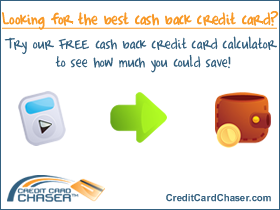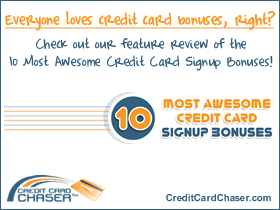Credit cards have not just become a common shopping tool; they have actually replaced currency for many people. For some people, credit cards are a convenience factor for not having to carry cash (and may even be a great way to make money if they are using a cash back credit card or a rewards card), but for many people it is a way of financing larger purchases which may or may not be realistically affordable.
There are some people who use credit cards for all of their purchases, and they do this for a variety of reasons. Usually it is because they have a rewards card and earn cash or merchandise simply for using the card instead of cash. This type of rewards card has merit provided you pay your balance in full every month.
Other people have used their credit cards as a method of short term survival during the economic crisis, and unfortunately that usually means that the only monthly payment that is getting made is the minimum requirement, which means that your purchases are not getting paid off and your credit card debt is either lingering or growing. Fortunately, there are solutions to eliminating this debt.
Creating a Budget to Eliminate Debt
Your credit card debt most likely did not build over night, so you should not expect an overnight solution to your problem either. If you are offered a quick fix by someone for a fee, no matter how small that fee might be, you should probably run in the other direction. Chances are that person is offering you a false fix and is just going to take more of your money and still leave you with debt. The only way to truly eliminate your credit card debt is by creating a budget and sticking to it. And yes, part of your new budget must include credit card payments in excess of the minimum amount. Here are two simple steps to get you started.
Step One: The first thing you need to do is calculate your income and your expenses. Many people shy away from budget planning because it seems overwhelming, but you can do this quite simply and you don’t even need to put it on a spreadsheet if you don’t want to. Just make a list of all your earnings and then make a list of all of your expenses. If you pay certain bills twice a year, such as car insurance or a water bill, calculate the annual expense and divide it by twelve to achieve your monthly expense. Be sure to list all of your expenses, including an average of how much you spend on clothes or gifts throughout the year. This is important not only to get a feel for where you spend your money, but also where you may be able to reduce some of your expenses.
Step Two: The next thing you need to do is inventory of all of your credit cards. Write down the name of the card, your credit card limit, your credit card balance, your annual percentage rate (APR), and your minimum monthly payments. Sometimes the minimum monthly payment varies, so average out the last three statement minimums to come to a figure for your list. (For example, if you had three different monthly minimums of $120, $100, and $109 over the last three months, add those three numbers together and then divide it by three to get an average of $109.66, which you can round up to $110 for convenience’s sake).
An important note at this time is that your credit score may have already been negatively impacted by your credit card debt, so you need to focus on removing the debt and reversing your credit score over time. Typically, if money was not a factor, you would pay off the credit card that was closest to reaching its maximum limit first despite the APR as this would help raise your credit score the fastest.
However, you are most likely in credit card debt because money is a factor, and therefore you need to pay off your credit cards as fast as possible by spending the least amount of money. You have no control over your current balance, but you do have control over paying off the highest APR credit card first, putting more money back in your pocket to apply to remaining debt.
Other Actions that Eliminate Debt
Step Three: Once you have your list of your credit card information, call every bank and ask for a reduction to your APR. They are not required to give you one, but if you take the time and have the patience to make repeated phone calls and wait on hold to talk to supervisors, there is a good chance you can lower your APR.
(Read this helpful article to learn how to negotiate with credit card companies for some tips).
Once you have done this, select the card with the highest APR. This is your first target. Since you now have a list of your income and expenses, you can tactfully decide on the necessary expenditures and gently put to the side those expenses that are not so crucial.
For example, instead of buying coffee every morning for $0.99, you can make your own cup at home for approximately $0.03. This means that you can save $0.96 a day for a monthly average savings of $28.80. Now, that is almost $30 extra a month just from coffee. There are many hidden wastes in your spending that you can quickly reverse just by paying attention to your shopping habits.
Step Four: At this time you will continue to make all of your minimum monthly payments to all of your credit cards except for the card you chose with the highest APR. For an example, say this credit card has a minimum monthly payment of $110. For this card, you will pay the minimum monthly payment PLUS your extra found $29.00 (rounding up that $28.80 coffee savings) EVERY month. This will reduce your balance on this high APR card faster than you ever could do by just paying the minimum every month.
Some people don’t realize this, but if you only pay the minimum every month, there’s a good chance you’re only paying the interest for the most part and the principal balance is never substantially getting reduced. It is important to pay off your credit cards as quickly as possible and you can only do this by paying the maximum amount you can afford every month, not the minimum payment due.
Step Five: Once you have paid off your highest APR card, go back to your credit card list and choose the next highest APR card. Since you are already used to paying the extra $29.00, this will be a painless step. Start applying the extra $29.00 (or maybe this time you can make it $30) to this credit card’s minimum monthly payment. And this is the cycle you will continue until you have eliminated all of your credit card debt.
Third Party Options to Eliminate Credit Card Debt
Debt Consolidation is a term familiar to many people, and while it is a viable choice for some there are some hidden drawbacks. Debt consolidators buy your loans for you, consolidating all of your various credit card bills into one statement. One statement means one payment, and that payment is typically lower than what you are paying now.
The problem, however, is that with many debt consolidators, the APR for your newly consolidated debt loan is usually higher than you were paying with your credit card companies, and that means your loan will cost you more money in the long run. Other debt consolidators negotiate your terms for you with your credit card company and take a monthly percentage for their work. Remember, this is the step mentioned above where you called the banks yourself and requested a lower APR.
If you choose to go with debt consolidation, be very certain you are working with a reputable company and that you will be saving more money than you will ultimately be spending.
Bankruptcy is a complex legal issue that can eliminate credit card debt, but it can cost you much in personal assets including your home equity in some states. It also has a major negative impact on your credit score for years to come. If you are considering bankruptcy, you will need to consult with an attorney, but be prepared to pay a couple of thousand dollars upfront as a retainer fee.
Next Steps After Debt Elimination
Eliminating credit card debt is not easy, but it is manageable and can be accomplished. Once you have your credit card debt under control, you need to maintain proper spending habits to avoid another debt crisis.
In order to increase your credit score, you will need to use your credit cards responsibly, such as making occasional purchases and then paying off your balance in full.
Keep the credit cards you have and rotate them, and you can also take advantage of a low interest or reward style credit card by comparing different offers using the free credit card “Chaser” tool found on this website.
Similar Articles:
- How can I pay off credit card debt fast?
- How do I get out of credit card debt?
- How does the balance on credit cards affect interest?
- The Fastest Way to Get Rid of Debt
- Do I have to pay off my credit card debt in full every month?
- How do I reduce credit card debt?
- When should I pay off credit card debt?








